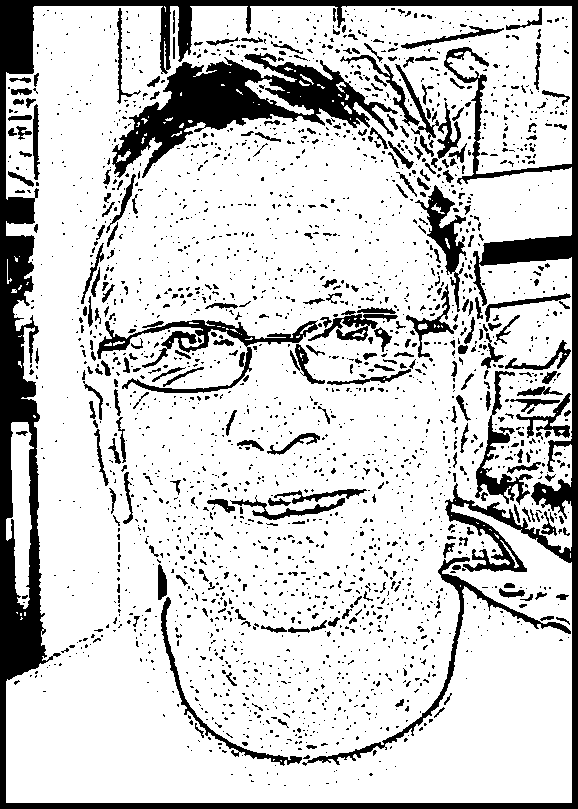
This site
. . . is written, built, and maintained in RStudio using the R blogdown package and the Hugo static website generator, and is hosted on GitHub Pages. See How I Deploy My Website to GitHub Using RStudio, blogdown, and Hugo.
Everything is open-source, plain-text, future-proof, platform-independent, all-natural, and various other things of this nature.
Me
Richard A. Lent
Learning Design Specialist
Information Technology Services
College of the Holy Cross
1 College
Street
Worcester, Massachusetts USA 01610
EDUCATION
- Ph.D State University of New York at Stony
Brook (Ecology and Evolution)
- M. S.
University of Vermont (Wildlife and Fisheries
Biology)
- B. S. University of Massachusetts at
Amherst (Natural Resource Studies)
- Unix
System/C/C++ Programming Certificate, Worcester Polytechnic
Institute
- Data Science
Specialization,
Johns Hopkins University and
Coursera
-
Diploma, Maynard High School (Massachusetts)
POSITIONS
- Research Assistant, Carr Research Laboratory, Inc.,
Wellesley, Massachusetts
- Scientist, GCA/Technology Division,
Bedford, Massachusetts
- Wildlife Biologist, Environmental Research
and Technology, Inc., Concord, Massachusetts
- Research Assistant,
Manomet Bird Observatory, Manomet, Massachusetts
- Cornell
University Laboratory of Ornithology, Seatuck Research Program; Seatuck
Foundation:
Staff Biologist
Assistant Director
Acting Executive Director
Associate Director of Research
- Visiting Assistant Professor of Biology, Amherst College
-
Adjunct Assistant Professor of Biology, Amherst College.
- Data
Manager/Ecologist, Harvard University, Harvard Forest
- Present
position: Learning Design Specialist, College of the Holy Cross
PROFESSIONAL CERTIFICATION
- Certified Wildlife Biologist (The
Wildlife Society)
- Xi Sigma Pi (National Forestry Honor Society,
Alpha Omicron Chapter)
I straddle two disparate worlds: that of the field biologist and that of the computer programmer. I have spent years pursuing butterflies and birds in their natural environments, accumulating data on their habits and habitats. An equal number of years, perhaps more, have been spent at a computer, analyzing data, writing program code, and working with software. As an ecologist and evolutionary biologist, I have seen those sciences themselves evolve, becoming increasingly quantitative, analytical, computer-intensive, and globally interconnected. As a computer technologist and programmer, I have witnessed the pivotal decades of the Information Age, have participated in the explosive development of the Internet, and have known mainframe computers, minicomputers, microcomputers, laptops, tablets, smartphones, and simple calculators. While collecting field data I have been bitten by mosquitoes, black flies, deer flies, greenhead flies, horseflies, no-see-ums, ticks, ants, snakes, songbirds, dogs, and fish, attacked by raptors, accosted by gun-toting Crime Watch volunteers, have clawed my way through dense undergrowth consisting of an equal mixture of thorns and poison ivy, stepped on yellowjacket ground nests and into various types of animal excreta, have nearly been trapped out on a salt marsh overnight by the rising high tide, and have accidentally splashed formaldehyde into my eyes (but luckily was able to wash it out with iced tea). Over the years I have stored my hard-earned data on paper punch cards, paper tape, magnetic tape, 8-inch, 5.25-inch, and 3.5-inch floppy disks, Bernoulli cartridges, Zip drives, hard drives, flash memory drives, CDs, DVDs, assorted network locations, and in the memory of cellular telephones. More recently I have delved the sacred mysteries of YouTube, Facebook, Instagram, Twitter, and Mastodon, and have worried about whether I am doing enough texting, tweeting, tooting, emoji-ing, and friending. I have e-mailed, posted, blogged, wikied, uploaded, and downloaded across the vast reaches of the Internet in addition to navigating WANs, LANs, CANs, and GANs. My psyche has been scarred by kernel panic, by operating system upgrades gone horribly wrong, and by traumatic data loss. I have gotten peanut butter on my coated optics and have inadvertently numbed my lips and dissolved the yellow paint off of my Ticonderoga number 2 pencils with the industrial-strength insect repellent coating my fingers. I have faced the Blue Screen of Death, pressed Ctrl-Alt-Delete, and pulled the plug more times than you can shake a memory stick at, and, while I can barely write an English sentence, I can program a computer in eight different languages. Sometimes maybe with the help of a little artificial intelligence. Resistance is futile.
Through all of this I have never tired of watching a new butterfly emerge miraculously from its seemingly-dead chrysalis. I also truly appreciate a well-written, concise block of program code that efficiently implements a numerical algorithm on a computer. One can indeed be fascinated by the astonishing reality of Nature while being simultaneously enthralled by a fragment of virtual Nature living inside of an electronic machine.